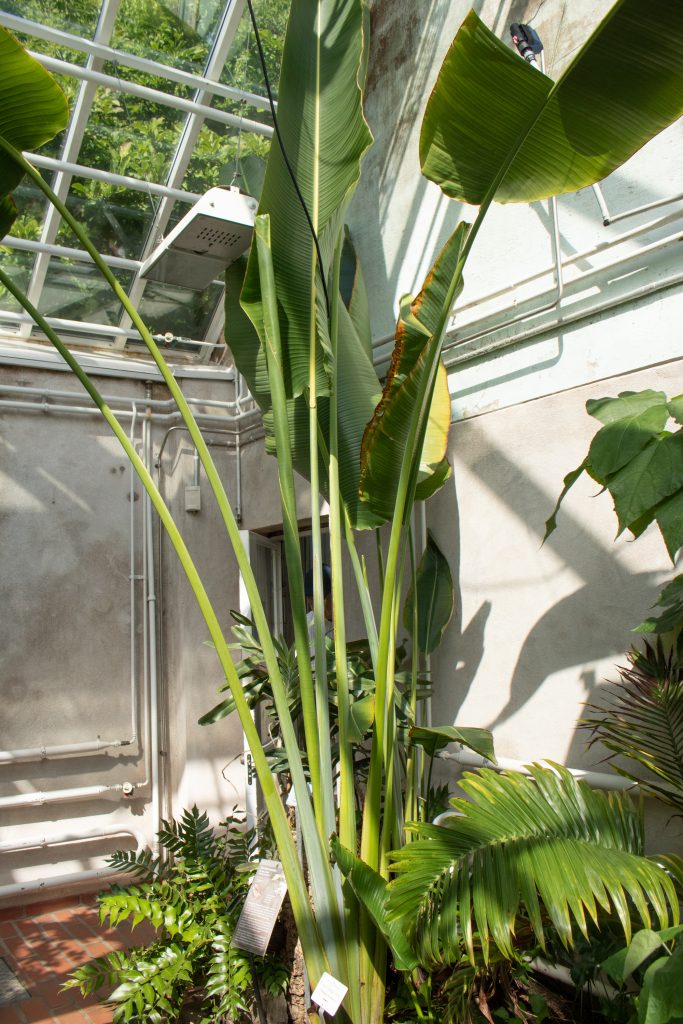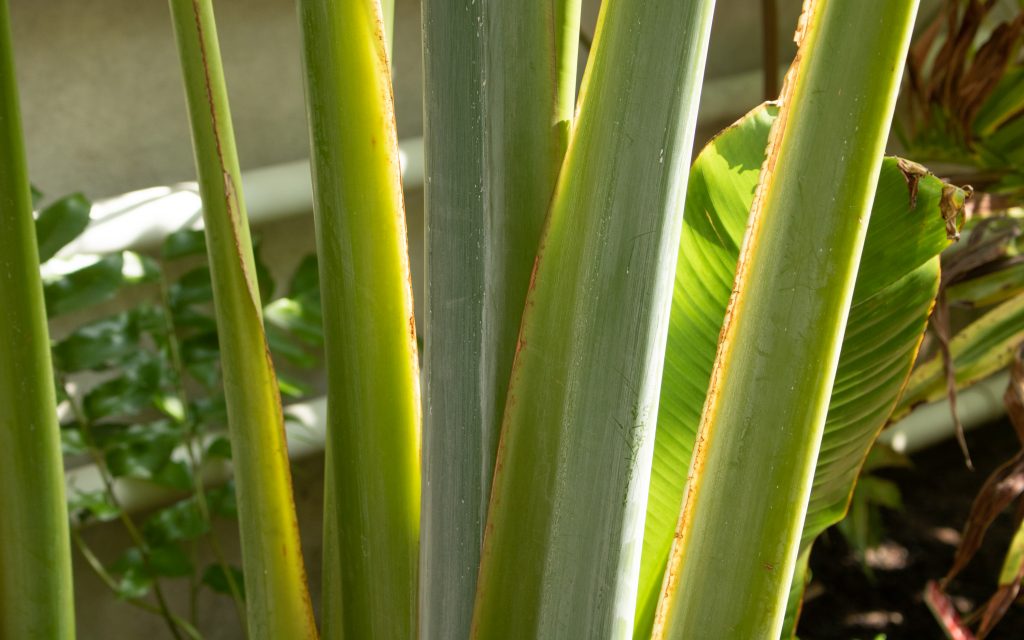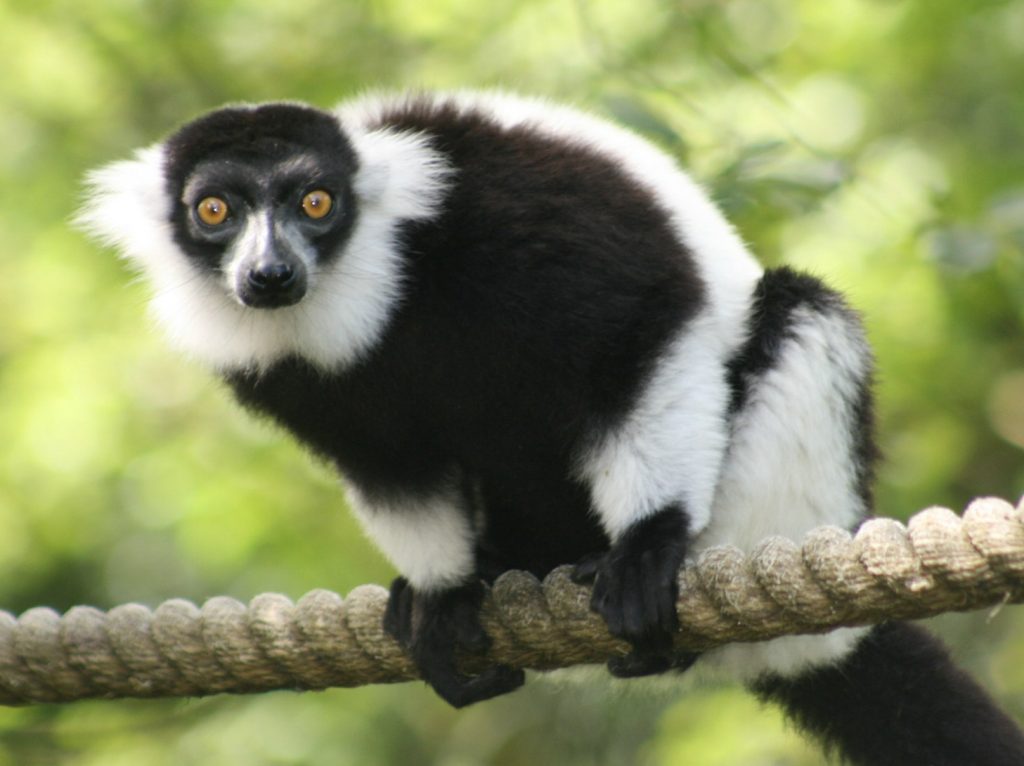The backpacker’s saviour
This impressive species comes from Madagascar, but is today grown as an ornamental plant nearly everywhere in the tropical region.
There are two different stories to how the traveller’s palm got its name. According to one, a thirsty traveller can find water at the root of the plant where the stems of the leaves collect water (this is true!). According to the other, the fan formed by the leaves almost always grows on an east-west line. This means that a lost traveller could use the plant as a compass. However, the traveller’s palms in the Island Room have always grown in slightly different directions (and quite possibly this is also the case for individuals in the wild), so we strongly recommend packing an actual compass for any hikes around Madagascar.
The flowers of the traveller’s palm produce nectar which is very popular among the lemurs, particularly the black-and-white ruffed lemur (Varecia variegata). The black-and-white ruffed lemur is the most significant pollinator of the traveller’s palm, and also the largest pollinator in the world! It pushes its snout deep into the flower to get at the nectar. Some pollen remains on the snout from the previous flower. While drinking the nectar, the lemur rubs the pollen on its snout onto the stigma, pollinating the flower.


